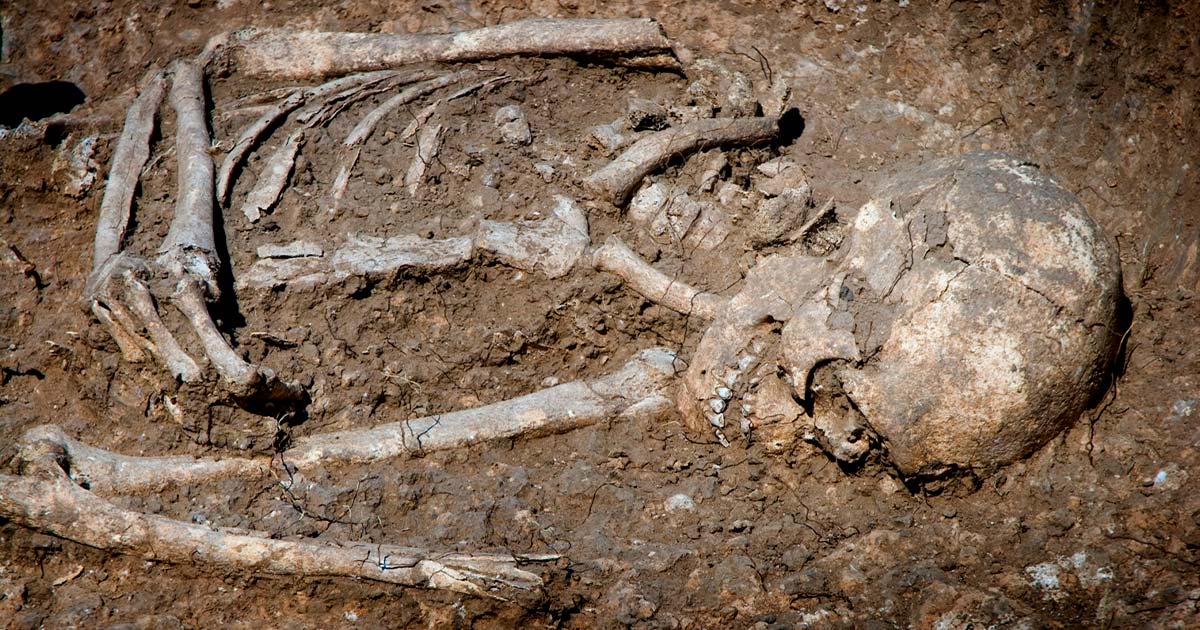Ancient Remains of Disabled Teenage Girl Unearthed in Brazil
A remarkable archaeological discovery in Brazil's Serra das Confusões National Park has unveiled the centuries-old remains of a disabled teenage girl, whose life was marked by spina bifida. Unearthed at the Toca do Olho d'Água das Andorinhas excavation site in Brazil's east-central region, the findings were enriched by a tapir skull and a seed bracelet, artifacts that lend an intimate touch to this ancient narrative.
Newsweek reported that researchers confirmed the discovered remains as belonging to an indigenous adolescent from the pre-colonial era, estimated to be around 300-350 years ago. The exact age of these remains, however, still awaits clarification pending the outcome of radiocarbon dating tests.
The skeleton, which must be more than 300 years old, shows the teenager had spina bifida, a congenital defect of the spinal column. https://t.co/rGCW7rKuVG
— Newsweek (@Newsweek) July 18, 2023
Spina Bifida: A Debilitating Condition
The Centers for Disease Control (CDC) describes spina bifida as a neural tube defect that occurs when a specific point along the spine fails to close completely during early fetal development. The severity of spina bifida can vary, leading to mild to severe physical and intellectual disabilities depending on the size and location of the opening in the spine, as well as whether the spinal cord and nerves are affected. Remarkably, despite her disability, the girl survived through her teenage years, indicating the presence of a caring and supportive community around her.
Tiago Tomé, professor at the Federal University of Minas Gerais, noted in Newsweek, "In her case, it was a very severe form of the disease. It's quite likely that she was unable to walk, thus meaning that she would have to be taken care of by the remaining people of her group." This discovery reveals valuable insights into the societal organization and communal care practices of ancient indigenous communities.
"The notions we hold today surrounding the care for disabled people are not only not exclusive to our time, nor to Western societies. Indigenous peoples in Brazil were displaying that same behavior before the arrival of colonialism," said Tomé.

Medical illustration of infant spina bifida with annotation. Source: rob3000 / Adobe Stock.
Indigenous Medical Care in Brazil
Before the arrival of the Portuguese in Brazil, the indigenous populations that inhabited the region had their own unique systems of medical care and healing practices. These ancient communities relied on traditional knowledge, herbal remedies, and natural resources to address various health conditions and maintain their well-being. Some information has been gleaned from archaeological findings, anthropological studies, and oral traditions passed down through generations.
In addition to herbal remedies, spiritual and ritualistic practices were also crucial components of their healthcare. Indigenous communities believed in the interconnectedness of the physical and spiritual realms, and illnesses were often seen as manifestations of spiritual imbalances or disturbances. Shamanic rituals, prayers, and ceremonies were employed to restore harmony and promote healing.
Bracelet and Tapir Skull
The Jerusalem Post reported that archaeologists unearthed a tapir skull alongside the teenager's remains. It is not yet clear whether the skull was intentionally place with the body or just came to be in close proximity but archaeologists will be seeking to investigate this in future research.
They also discovered an intricate bracelet embedded with approximately 1,000 tiny beads, hinting at the girl's penchant for ornaments. The bracelet was likely crafted from seeds, mirroring the common practice in indigenous communities renowned for their resourceful utilization of nature, even in their jewelry-making.
The teenager's remains are under investigation at the Laboratory of Osteoarchaeology at Universidade Federal do Piauí, led by Professor Claudia Cunha and her students. As a key part of the project, Cunha's lab specializes in studying both human and animal remains, according to Tomé. He also shared that the team, comprising students from diverse universities, is set to revisit the site shortly to gain further clarity on these intriguing findings.
Top image: An ancient skeleton (representational). Source: Idanthyrs / Adobe Stock.
By Sahir Pandey
References
J P Staff. 2023. Archaeological remains of disabled teen discovered in Brazil. Available at: https://www.jpost.com/archaeology/article-751994.
White, R. 2023. Skeleton of Disabled Teen With Bracelet Puzzles Archaeologists. Available at: https://www.newsweek.com/skeleton-disabled-teen-bracelet-puzzles-archaeologists-1813779.

















